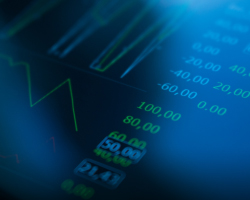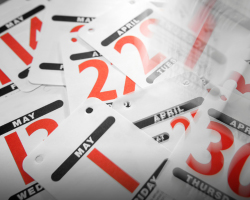Addressing Trading Biases: Managing Psychological Factors in Day Trading

In the realm of day trading and investing, the significance of psychology cannot be overstated. Even the most accomplished traders frequently grapple with errors stemming from their emotions. Among the key psychological challenges in trading are fear and greed.
Fear can manifest in various forms, such as exiting a losing trade prematurely or hesitating to enter a trade due to apprehension. On the other hand, greed takes on various expressions, including excessive trading, herd mentality, over-leveraging, and taking oversized positions.
This article will zero in on another facet of psychology known as biases. These emotional traits can lead to substantial misjudgments in the market, and even seasoned traders have been known to suffer significant losses as a result.
Understanding Biases in Day Trading
Biases are vital emotional elements that all day traders and investors must be cognizant of, as neglecting them can result in considerable short- or long-term losses. A bias occurs when an investor's decision-making is influenced not by facts, but by preconceived notions.
Numerous types of biases exist in psychology, but in day trading and investing, cognitive bias is of paramount concern. Cognitive biases arise from the way our brains process information, making it crucial for traders and investors to grasp these biases early in their careers to avoid common pitfalls.

Examples of Trading Biases
In both day trading and investing, there are various biases that can impact decision-making. Some of the most prevalent ones include:
- Anchoring Bias
This occurs when a trader places excessive reliance on initial information, often disregarding subsequent developments. For instance, a trader might buy a stock based on strong earnings, ignoring the possibility of a downturn during the earnings call. - Gambler's Fallacy
Traders fall prey to this bias when they make decisions based on recent performance. Assuming that a stock will reverse its trend after a series of gains is an example of this fallacy. - Risk Aversion Bias
This bias is characterized by a trader's reluctance to take risks in the market, potentially causing them to miss out on lucrative opportunities during bull markets. - Confirmation Bias
Traders influenced by confirmation bias make decisions based on the opinions of others, such as following buy or sell recommendations from analysts. - Overconfidence Bias
Overconfident traders believe they possess superior skills, often relying on instinct rather than rigorous analysis. This overconfidence can lead to costly mistakes. - Herding Bias
This bias arises when individuals assume that the majority is right, resulting in overcrowded trades and inflated valuations for certain assets.
Impact of Biases in Day Trading
The consequences of biases in day trading and investing can be profound. Traders often suffer losses because they deviate from sound analytical methods. For example, a trader influenced by herding bias may buy a stock as it rises, only to be caught in the distribution and markdown phases.
Biases can also lead to poor decision-making, stress, and depression, affecting even seasoned traders and causing substantial losses. Recognizing and addressing these biases is crucial for enhancing one's performance and success in the financial markets.
Addressing Emotional Biases in Trading
Overcoming emotional and cognitive biases in day trading is crucial for success in the financial markets. Here are several strategies to help you manage and mitigate these biases effectively:
Establish and Adhere to Trading Rules
A fundamental step in managing cognitive biases is to create a set of trading rules and rigorously follow them. For instance, you can implement a rule requiring multi-timeframe analysis before entering a trade. Keeping a trading journal to record your trades is another valuable rule. Setting rules is only the first step; it's essential to ensure strict adherence to them. For instance, if you rely on the VWAP indicator, you might have a rule that mandates executing buy trades when the price moves above this indicator.
Implement Effective Risk Management
Proper risk management is a key aspect of mitigating biases. Some recommended risk management strategies include:
- Right Leverage Size: Determine the appropriate leverage size for your trades, considering your risk tolerance and account size.
- Position Sizing: Adjust the size of your positions to control risk and avoid overcommitting to a single trade.
- Use Stop Loss and Take Profit Orders: Always set Stop Loss and Take Profit orders to limit potential losses and secure gains.
Effective risk management strategies help you contain the impact of a biased decision and prevent catastrophic losses.
Self-Reflection
Self-awareness is a powerful tool in combating biases. Reflect on your own trading behavior and thought processes. Identify the specific biases you tend to fall victim to, and actively work on recognizing and countering them. While it may not be easy, self-awareness is the first step toward improvement.
Focus on Your Trading Strategy
Developing and adhering to a well-defined trading strategy is paramount. Create a solid strategy and thoroughly test it in a demo account before transitioning to a live trading environment. A robust strategy will guide your decisions and help you avoid biases. Like your trading rules, ensure you faithfully follow your strategy.
Emotional Control
Developing emotional control is vital in reducing the impact of biases. Train yourself to maintain a rational and disciplined mindset during trades. Learning to detach from emotional reactions to market fluctuations will assist in making objective decisions.
Take Small Losses
It's crucial to accept small losses as part of the trading process. Recognize when a trade is not going as planned and cut your losses early. Avoid the temptation to hold on to losing positions in the hope that they will rebound, as this often leads to more significant losses.
Diversify Your Trades
Spreading your investments across various assets or markets can help reduce the impact of biases. Diversification can limit the influence of a single trade on your overall portfolio.
Utilize Technology and Trading Strategies
Automated trading platforms and trading bots can assist in minimizing the effects of biases by executing predefined strategies without emotional interference. These technologies follow a set of rules and maintain discipline in trading.
Consider Copy Trading
If you find it challenging to overcome biases on your own, consider copy trading. This approach involves replicating the trades of experienced traders by using platforms that offer this service. It allows you to benefit from the expertise of others while minimizing the impact of your own biases.
Tackling emotional and cognitive biases in trading requires a combination of discipline, self-awareness, risk management, and adherence to well-structured rules and strategies. Employing these strategies can help you become a more successful and resilient trader in the financial markets.
Summary
In conclusion, recognizing and managing emotional and cognitive biases is an essential endeavor for those engaged in day trading and investing. The profound impact of biases on decision-making and financial outcomes cannot be underestimated. To navigate the dynamic and often unpredictable world of financial markets, traders must employ a combination of discipline, self-awareness, risk management, and adherence to well-structured rules and strategies. These measures are vital for achieving success while minimizing the influence of biases and their potential for substantial losses.
About AdroFx
Established in 2018, AdroFx is known for its high technology and its ability to deliver high-quality brokerage services in more than 200 countries around the world. AdroFx makes every effort to keep its customers satisfied and to meet all the trading needs of any trader. With the five types of trading accounts, we have all it takes to fit any traders` needs and styles. The company provides access to 115+ trading instruments, including currencies, metals, stocks, and cryptocurrencies, which make it possible to make the most out of trading on the financial markets. Considering all the above, AdroFx is the perfect variant for anyone who doesn't settle for less than the best.











